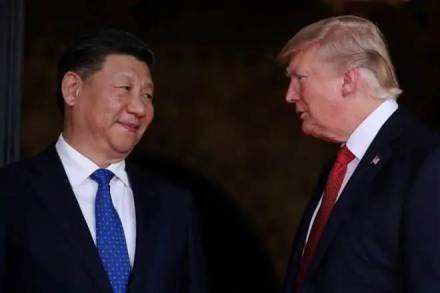President Donald Trump’s surprise threat to impose additional tariffs on USD 200 billion worth of products from China, ahead of the key trade talks between the two countries, came after his Chinese counterpart Xi Jinping vetoed the US’ demand of additional concessions, a media report said on Monday.
In his latest tweet on trade talks Trump said “for 10 months, China has been paying tariffs to the US of 25 per cent on USD 50 billion of high-tech and 10 per cent on USD 200 billion of other goods.”
These payments are partially responsible for America’s great economic results, he said.
“The 10 per cent will go up to 25 per cent on Friday. USD 325 billion of additional goods sent to us by China remain untaxed, but will be shortly, at a rate of 25 per cent,” he said.
Trump said that the tariffs paid to the US have had little impact on product cost, mostly borne by China.
“The Trade Deal with China continues, but too slowly, as they attempt to renegotiate. No!” he said in his tweet.
His threat to impose more tariffs came as a surprise as a high-level Chinese delegation led by Vice Premier Liu He was scheduled to attend the 11th round of talks with its US counterparts on Wednesday.
Trump’s threat of additional sanctions on Chinese imports revealed his impatience due to a lack of sufficient concessions from China, with sources suggesting that Xi vetoed additional concessions proposed by his negotiators, the Hong Kong-based South China Morning Post reported Monday.
Sources familiar with the discussions said the proposals submitted to Xi included one that promised more concessions.
“Xi told them ‘I’ll be responsible for all possible consequences’,” The Post quoted sources as saying.
Chinese negotiators subsequently presented a tougher proposal to Washington, the report said.
On Monday, Chinese Foreign Ministry scorched speculation that the Chinese delegation planned to cancel the visit to Washington to end the trade war.
The Wall Street Journal reported Sunday quoted unnamed sources as saying that “China is considering cancelling trade talks that are to resume in Washington starting Wednesday.”
Reacting to the report, Chinese Foreign Ministry spokesman, Geng Shuang told media briefing on Monday that “what I can tell you is that the Chinese team is preparing to travel to the US for the trade talks”.
He parried a spate of questions whether the talks would be resumed on Wednesday and declined to say when the trade team would go to Washington.
About Trump’s threat to impose punishing tariffs on USD 200 billion worth of additional Chinese products, Geng played it down saying that such a situation prevailed earlier.
“As to the US threat on Chinese tariffs, I think such situation appeared many times before. China’s position is always clear cut and the US knows that clearly. Regarding the trade talks between China and the US those consultations have been held for the 10th round and made positive progress.
“We hope the US and China will work together to reach a mutually beneficial treaty on the basis of mutual respect, this is not only in the interest of China but also that of the US as well as the aspiration of the international community. I know there is much attention about the trade talks. We are trying to get more information,” Geng said.
There were high hopes that Liu’s trip to Washington this week for the 11th round of talks would produce a deal to end the trade war which has ravaged the global economy for almost a year.
After Trump’s tweet threatening punitive tariffs on USD 200 billions of imports from China Beijing must now consider whether to bow to the pressure from the US and make more concessions, or break off negotiations altogether rather than appear to cave in to US demands, the Post report said.
Lu Xiang, an expert on China-US relations from the Chinese Academy of Social Sciences, said Trump was pursuing a strategy of putting maximum pressure on China.
“If China cancels the trip, Trump would blame China for the failure of the trade negotiations,” he told the Post.
One possible response from China could be to send a smaller delegation to US, he said.
Trump is demanding China to reduce the USD 375 billion trade deficit. He also called for verifiable measures for protection of intellectual property rights (IPR), technology transfer and more access to American goods to Chinese markets.
He has already increased the tariffs on over USD 250 billion Chinese exports to US and threatened to extend tariffs on USD 200 billion Chinese imports to 25 per cent. China too slapped reciprocal tariffs on some US exports to the country.
Trump recently hinted that Xi could visit the US in June setting off speculation that both countries could work out a trade deal by next month.
Media reports suggest that the two sides are still discussing key issues on structural issues, such as the US accusation of unfair subsidies in China, a mechanism to verify compliance and what to do with the tariffs the two have already imposed on hundreds of billions of dollars’ worth of each other’s goods.
Chinese officials argue that the compliance mechanism being insisted by the US overrides the World Trade Organisation mechanism and make it redundant.
